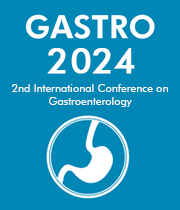Title : The iso-osmo-resistivity theory of digestion
Abstract:
The revolutionary, iso-osmo-resistive theory proposes that digestion in the upper gut causes the electro-resistivity of food components to converge on the state of iso-resistivity because it is necessary for passing through the membranes of absorbing cells and for compatibility with plasma in portal blood vessels. For example, the surfactant effect of bile in micelle formation reduces high resistivity of fats to values closer to iso-resistivity. Fats, carbohydrates and proteins differ markedly in their resistivity, which offers a way to distinguish them and identity the correct enzyme. Feedback mechanisms then monitor progress in order to switch off the enzyme efficiently, which could be achieved by electroreceptors in the upper gut mucosa. They could be simple nerve endings that do not have distinctive features or possibly duodenal Brunner’s Glands since it has been reported that they resemble known electroreceptors in platypus species. Electroreceptors are exceptionally sensitive, so their output combined with osmoreceptors would provide a highly accurate monitoring system. If valid, the theory would provide a new dimension for designing liquid meals that would bypass a non-functioning stomach.



